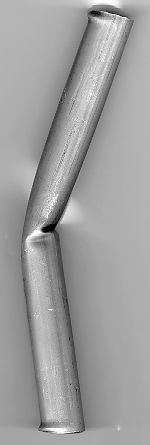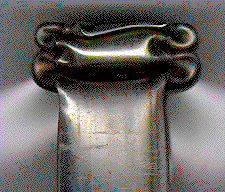| |
The photographs
show two tubes that have buckled and plastically deformed, a plastic
buckling situation.
The square section low alloy steel tube on the
left has a low slenderness and the end of the tube has been "concertinered"
by a buckling instability followed by plastic deformation. The deformation
rate in this experiment was controlled, however, a similar end shape
was produced when an identical tube was loaded until it buckled under constant
load. The highest force is required to start the buckling and a lower force
will then bend the plastic hinge until the material is folded and a new buckle
starts. |
|
|
|
|
|
|
|
|
|

